Knowledge Transfer
-
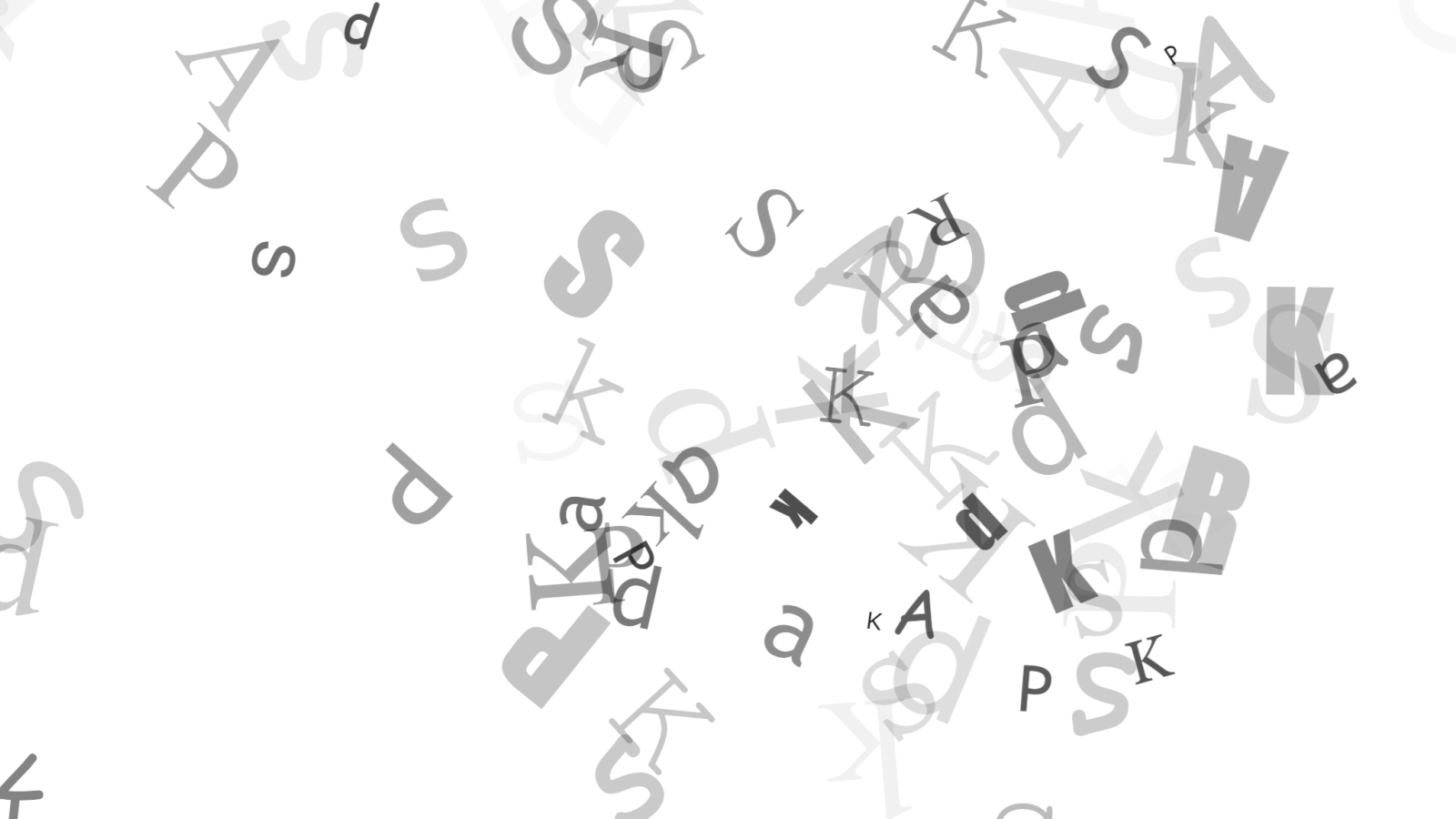
Radicals (Web resources)
Radical is part of the online festival programme of SPARK 2021 hosted by British Council, and is a collaborative project between School of Computing at Edinburgh Napier University (ENU) and Department of Cultural and Creative Arts at The Education University of Hong Kong (EdUHK) led by Dr Lee Cheng and Dr Hung Keung. Making use of the affordance and interactive characteristics of the internet space for public engagement in digital artmaking activities, the project team presents a web-based platform that allows anyone to 'draw' complex but imagery silhouettes with traditional English letters and Chinese radicals as the basic building blocks.
Read More -
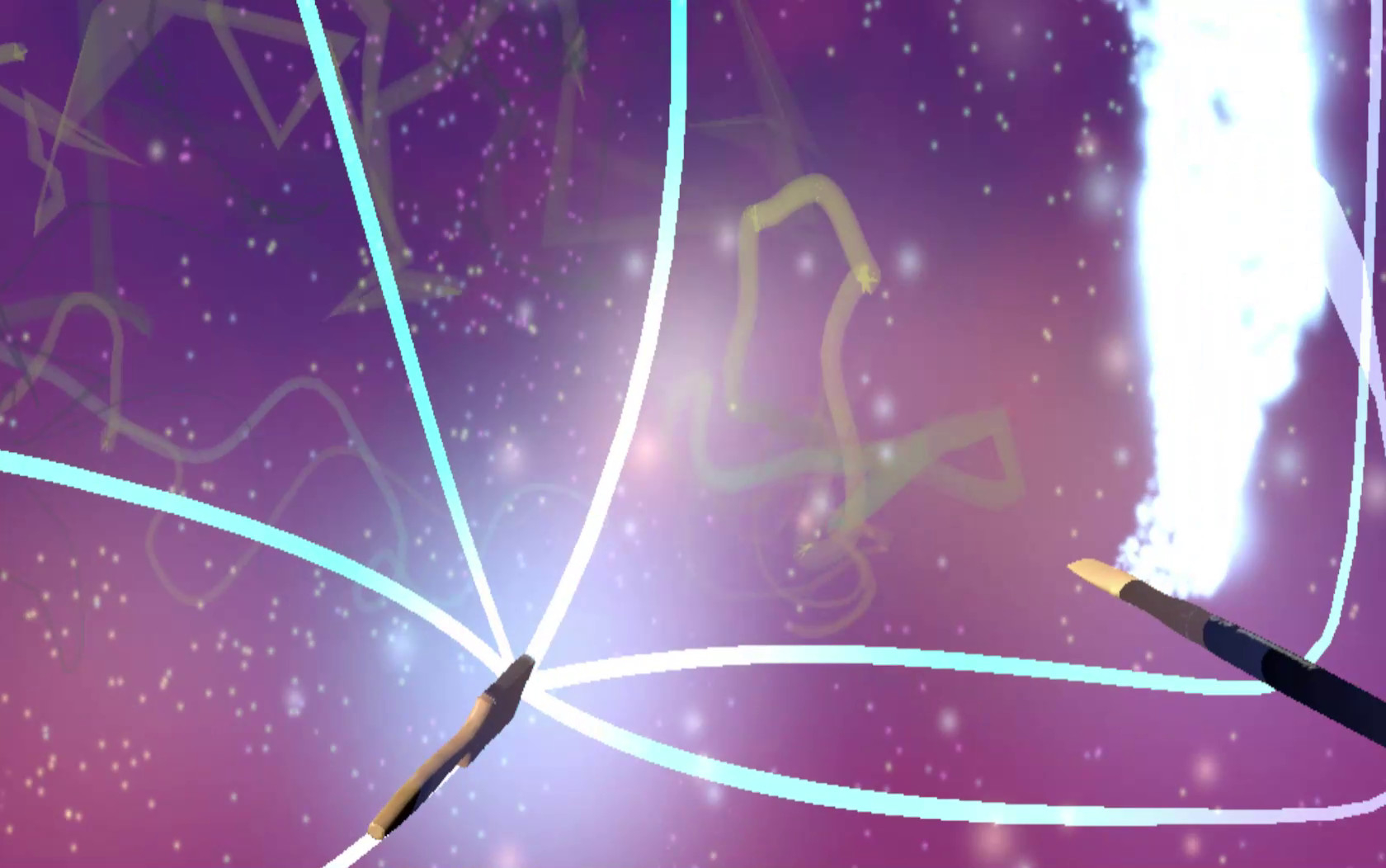
BrainLand (VR Game)
Designed for the rehabilitation training of the elderly and people with disabilities, this VR game provides a simulated learning environment for players to develop their motor, cognitive and life skills as well as express through artmaking within the playful experience. There are six rooms in BrainLand, each of them comes with different activities targeting the development of the aforesaid attributes.
Read More -
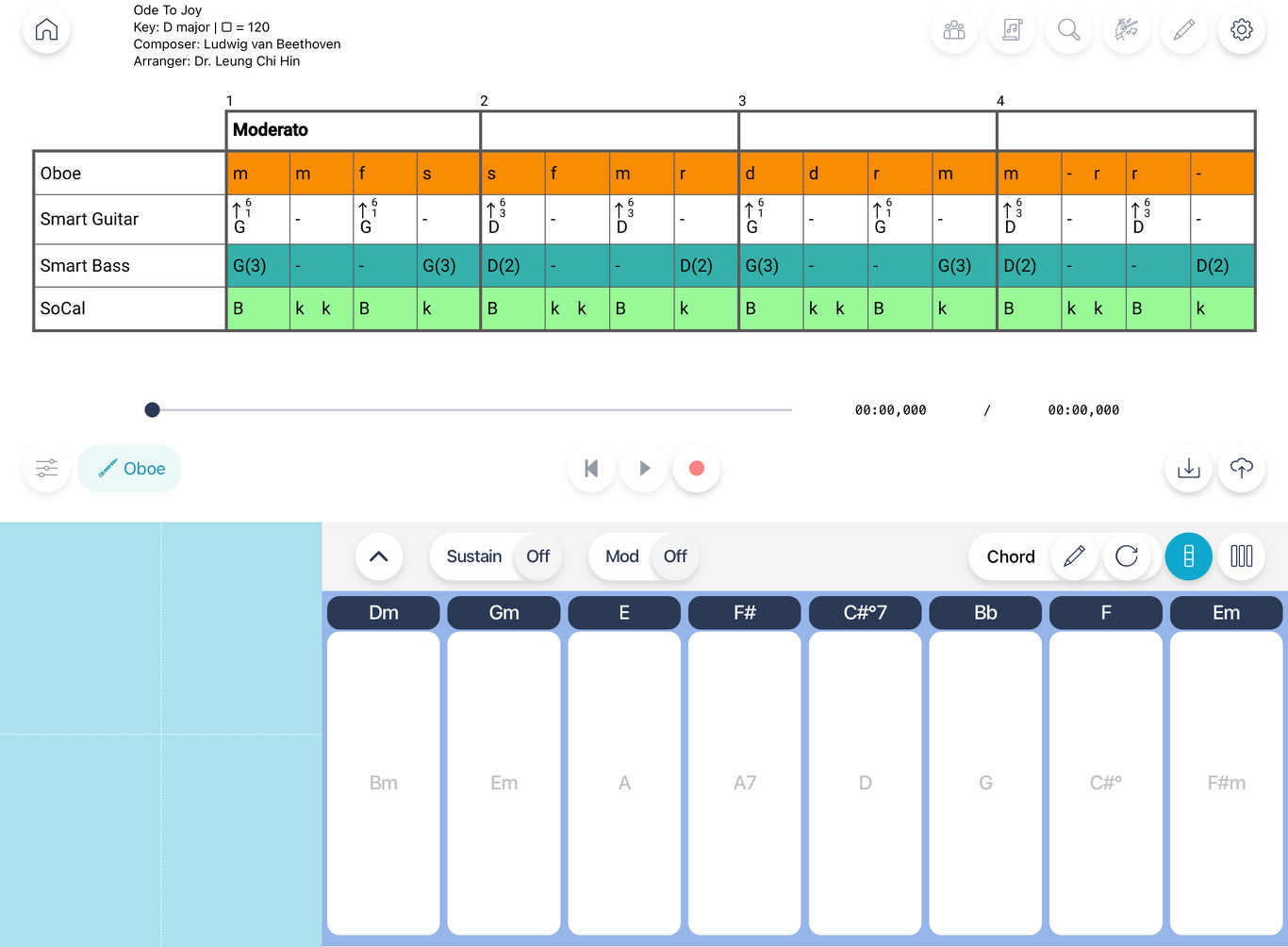
e-Orch (iPadOS App)
e-Orch is one of the best music-making companions. Check out the award-winning Grid Notation, which makes music score-reading the easiest ever. Make music with various interface that is personalised for your use. Shape your music with the Expression Grid with simple finger gestures. Jam with your family and friends like a pro. Record and share your fantastic music performance with just a tap.
Read More -
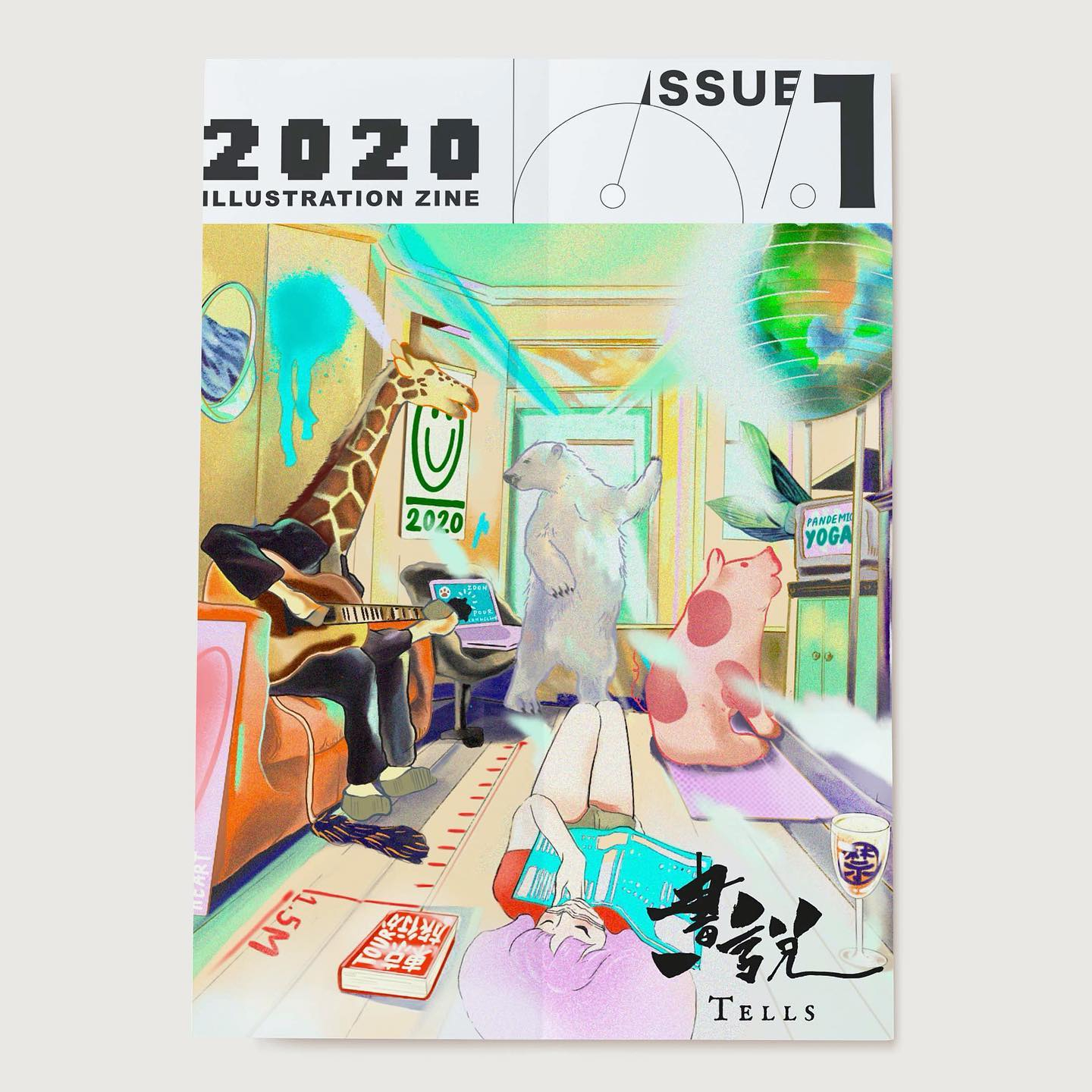
畫說 TELLS (Zine)
2020年出版的「畫說」為 Lab C 一個全新的計劃,是一本「用畫作來說故事」的插畫書,也是一個展現學生藝術創作能力,讓更多的讀者認識他們的平台。書中的每一期,都會集合學生創作的插畫作品,以及日常的文字分享,為學校和社區帶來新的文化與藝術資訊。
2020年出版的「畫說」為 Lab C 一個全新的計劃,是一本「用畫作來說故事」的插畫書,也是一個展現學生藝術創作能力,讓更多的讀者認識他們的平台。書中的每一期,都會集合學生創作的插畫作品,以及日常的文字分享,為學校和社區帶來新的文化與藝術資訊。
Read More -
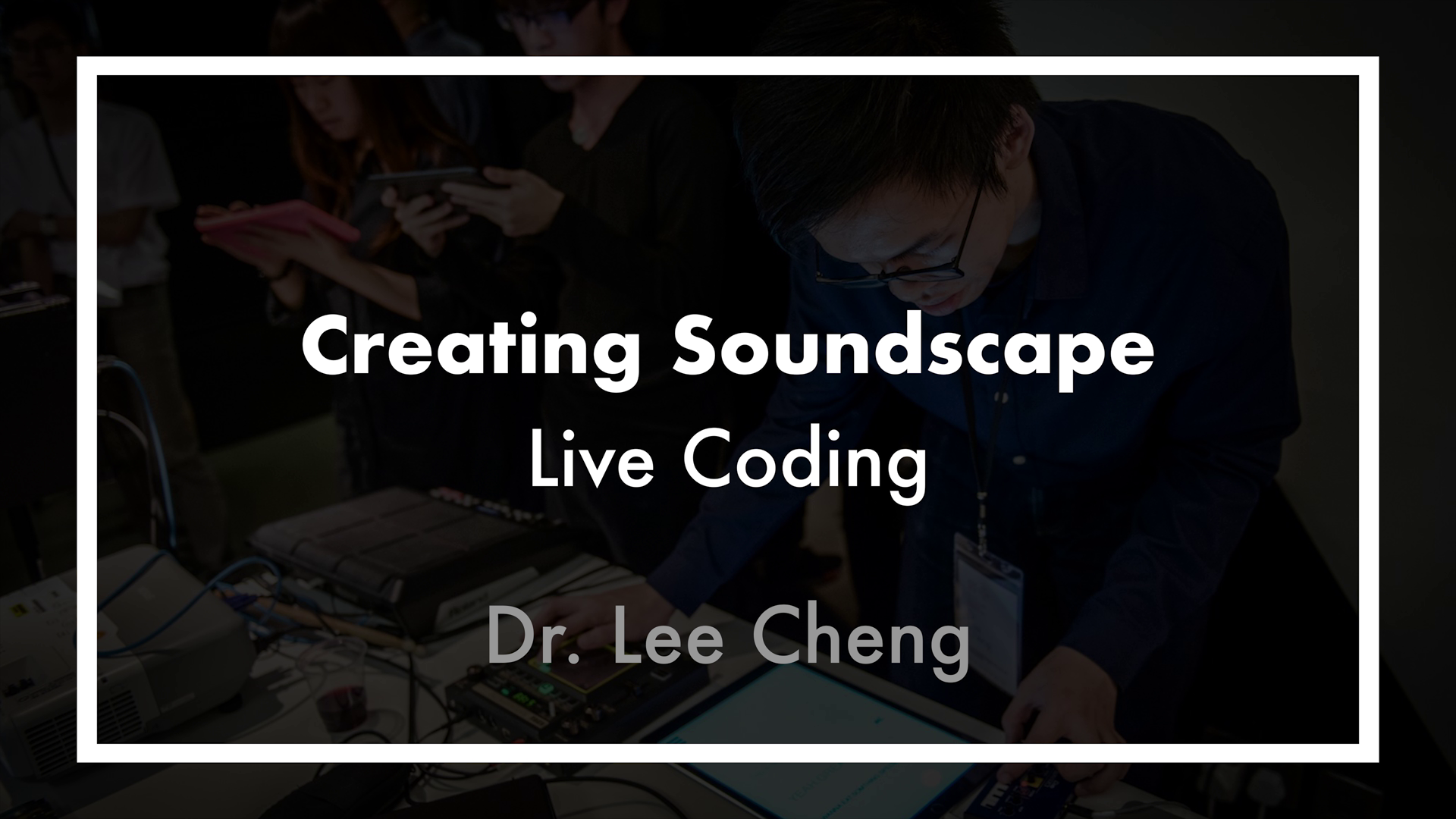
Live Coding with Sonic Pi (Web resources)
This live coding module aims to develop learners’ knowledge and skills of sound practice through live coding. It consists of 10 video lessons of 6 minutes each, using Sonic-Pi (www.sonic-pi.net) as the coding environment to deliver the teaching and learning content. After finishing this module, learners should be able to create and perform sonic works depicting various ambient sonic environments and soundscapes, and transfer the knowledge and skills learnt for furthering their sound practices in other platforms and art forms.
This live coding module aims to develop learners’ knowledge and skills of sound practice through live coding. It consists of 10 video lessons of 6 minutes each, using Sonic-Pi (www.sonic-pi.net) as the coding environment to deliver the teaching and learning content. After finishing this module, learners should be able to create and perform sonic works depicting various ambient sonic environments and soundscapes, and transfer the knowledge and skills learnt for furthering their sound practices in other platforms and art forms.
Read More -
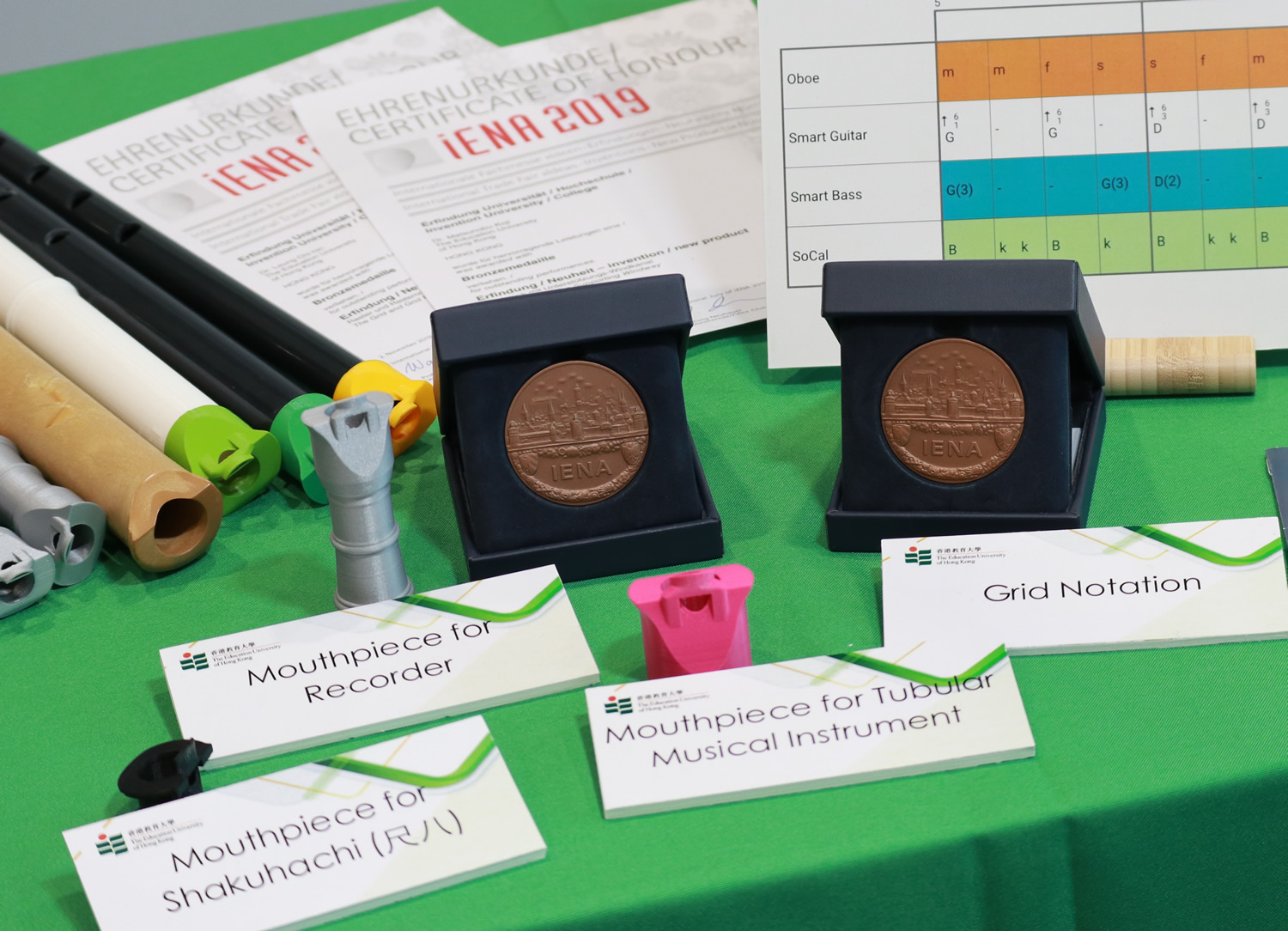
A Mouthpiece with a Supporting Windway (Patent)
This innovative mouthpiece, for which a PCT patent and a Japan Utility Model Patent are filed, is designed for musical instruments with a tubular structure, such as flutes, to (i) direct the air stream towards the blow edge of the flute’s top opening to exercise easy sound production; and (ii) enable players to position their chin and cover or partially cover the top opening to vary the effect of sound production – the “pitch bending effect”. This makes pitch bending possible in musical instruments, like recorders and flutes.
This innovative mouthpiece, for which a PCT patent and a Japan Utility Model Patent are filed, is designed for musical instruments with a tubular structure, such as flutes, to (i) direct the air stream towards the blow edge of the flute’s top opening to exercise easy sound production; and (ii) enable players to position their chin and cover or partially cover the top opening to vary the effect of sound production – the “pitch bending effect”. This makes pitch bending possible in musical instruments, like recorders and flutes.
Read More -
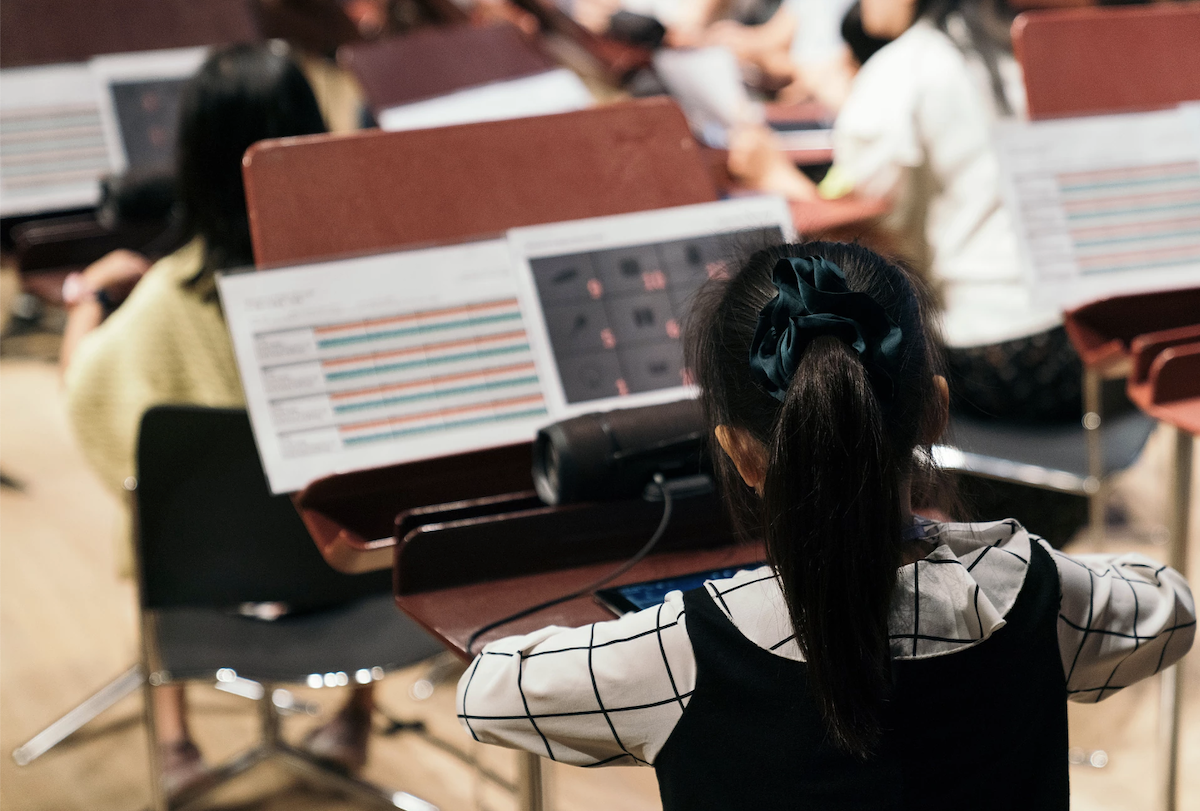
The Grid and Grid Notation for Music Education (Patent)
The Grid Notation, for which a Hong Kong patent and a China patent are filed, is associated with an innovative music notation software programme, called The Grid. Using the grid to represent rhythm – solfège/letter names for pitch, colour for dynamics, and tailor-made symbols for articulation – lowers the barrier for music score reading and provides unlimited possibilities for music performance and composition under the tablet orchestra e-Orch setting.
The Grid Notation, for which a Hong Kong patent and a China patent are filed, is associated with an innovative music notation software programme, called The Grid. Using the grid to represent rhythm – solfège/letter names for pitch, colour for dynamics, and tailor-made symbols for articulation – lowers the barrier for music score reading and provides unlimited possibilities for music performance and composition under the tablet orchestra e-Orch setting.
Read More -
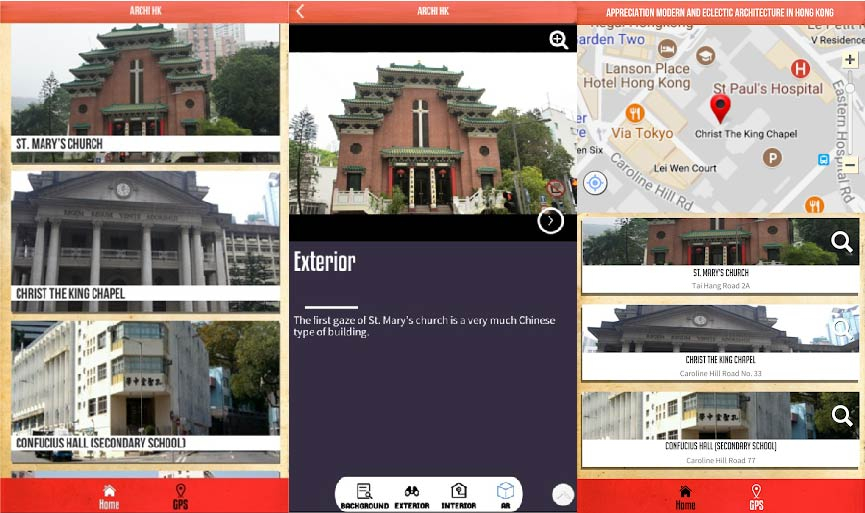
ARchi HK (iOS & Android App)
This mobile app is intended for the public and students to appreciate modern architectural heritage in Hong Kong, mainly those built from the 1920s-1950s. Primarily developed to enhance the field trip experience for university students, it also embodies augmented reality (AR) and GPS locations so all public users can easily locate neighbouring sites of modern architectural heritage around them and appreciate their historical, social and aesthetic contexts in a user-friendly way. The mobile app will therefore construct knowledge actively through negotiation with the buildings and heritage sites and aim at enhancing awareness and understanding towards modern architecture in Hong Kong.
This mobile app is intended for the public and students to appreciate modern architectural heritage in Hong Kong, mainly those built from the 1920s-1950s. Primarily developed to enhance the field trip experience for university students, it also embodies augmented reality (AR) and GPS locations so all public users can easily locate neighbouring sites of modern architectural heritage around them and appreciate their historical, social and aesthetic contexts in a user-friendly way. The mobile app will therefore construct knowledge actively through negotiation with the buildings and heritage sites and aim at enhancing awareness and understanding towards modern architecture in Hong Kong.
Read More -
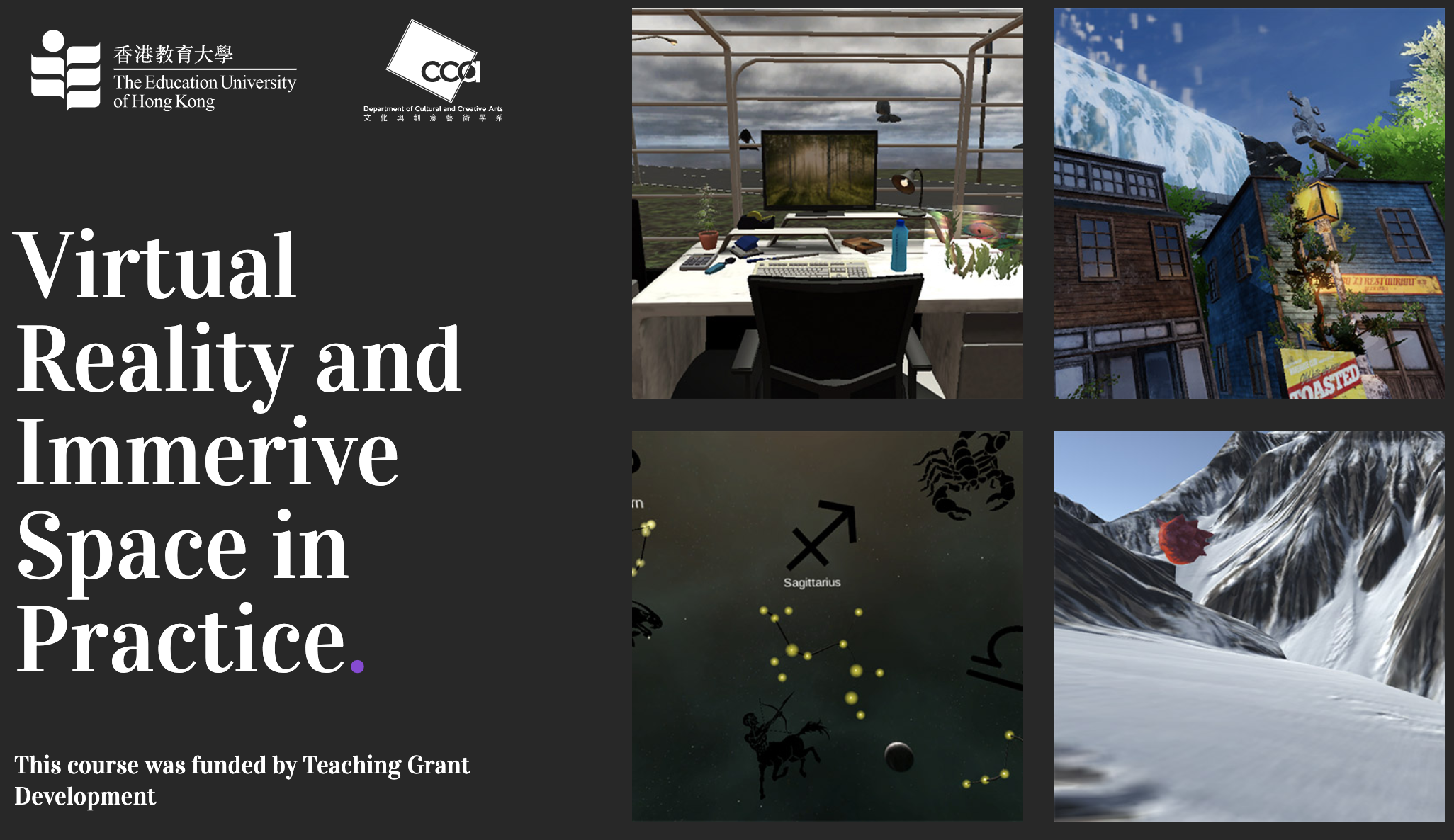
Virtual Reality (VR) & Immersive Space in Practice (Web resources)
The rapid development of virtual reality (VR) and immersive technology has made available many applications in entertainment, health care and medical, education and training, architectural and urban design, and creative arts that were not possible before. Immersive products have been more accessible in the market, and more people could be able to participate in the development and creation of immersive artefacts through software platforms and affordable hardware. This course provides basic understanding and skills training for immersive development and application.
The rapid development of virtual reality (VR) and immersive technology has made available many applications in entertainment, health care and medical, education and training, architectural and urban design, and creative arts that were not possible before. Immersive products have been more accessible in the market, and more people could be able to participate in the development and creation of immersive artefacts through software platforms and affordable hardware. This course provides basic understanding and skills training for immersive development and application.
Read More -
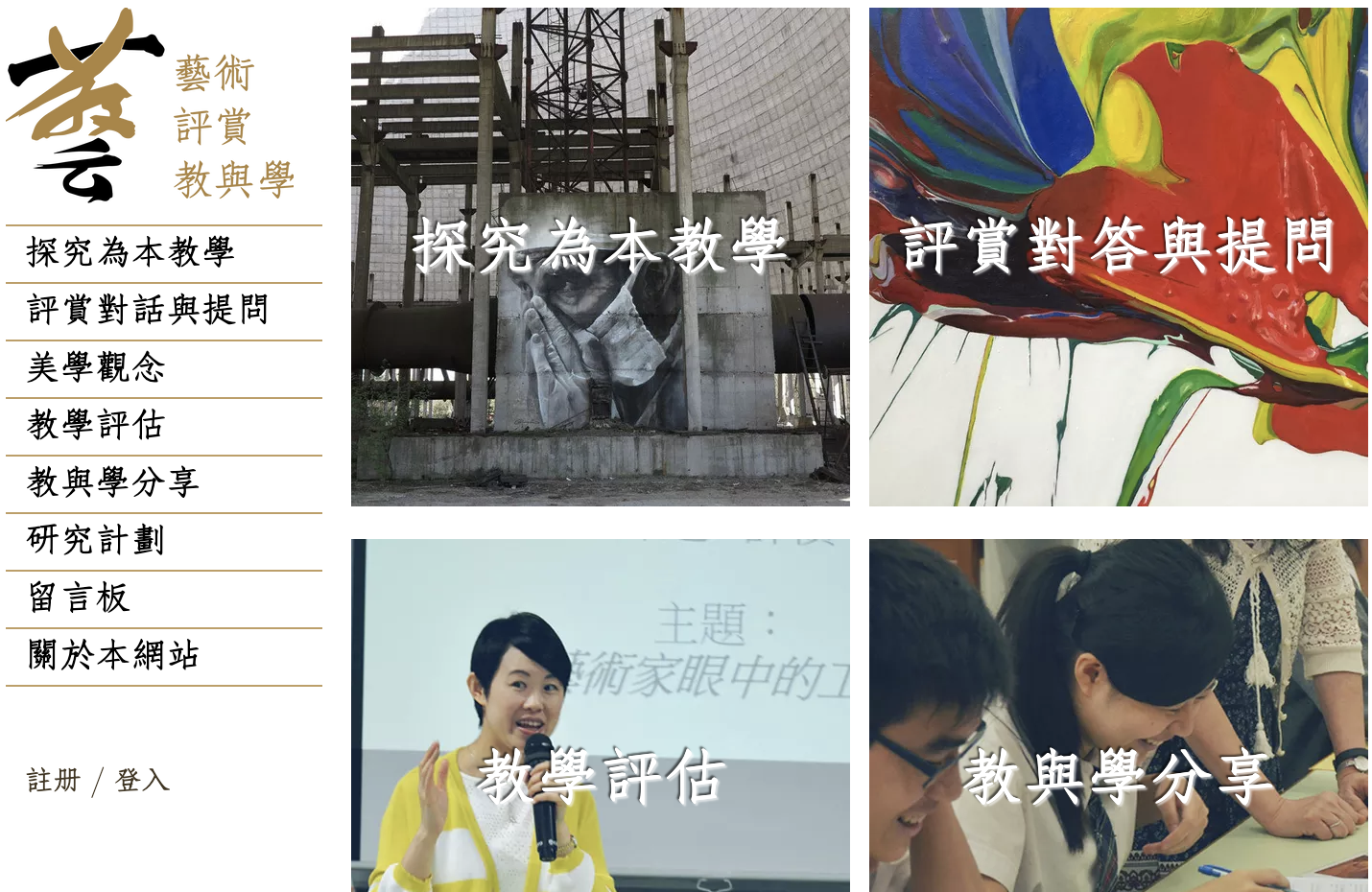
Art Criticism Learning and Teaching (Web resources)
Based on the results obtained from the GRF project, a website has been created to consolidate and organize the materials accumulated and transfer the knowledge created for the use of teachers in schools. The website ‘Learning and Teaching Art Criticism’ contains unit plans, explanations, readings, video clips and student art criticism essays. The website has successfully served as a platform to disseminate GRF project results, build up learning and teaching resources in art criticism and form a Community of Practice for future research and impact enhancement.
Based on the results obtained from the GRF project, a website has been created to consolidate and organize the materials accumulated and transfer the knowledge created for the use of teachers in schools. The website ‘Learning and Teaching Art Criticism’ contains unit plans, explanations, readings, video clips and student art criticism essays. The website has successfully served as a platform to disseminate GRF project results, build up learning and teaching resources in art criticism and form a Community of Practice for future research and impact enhancement.
Read More -
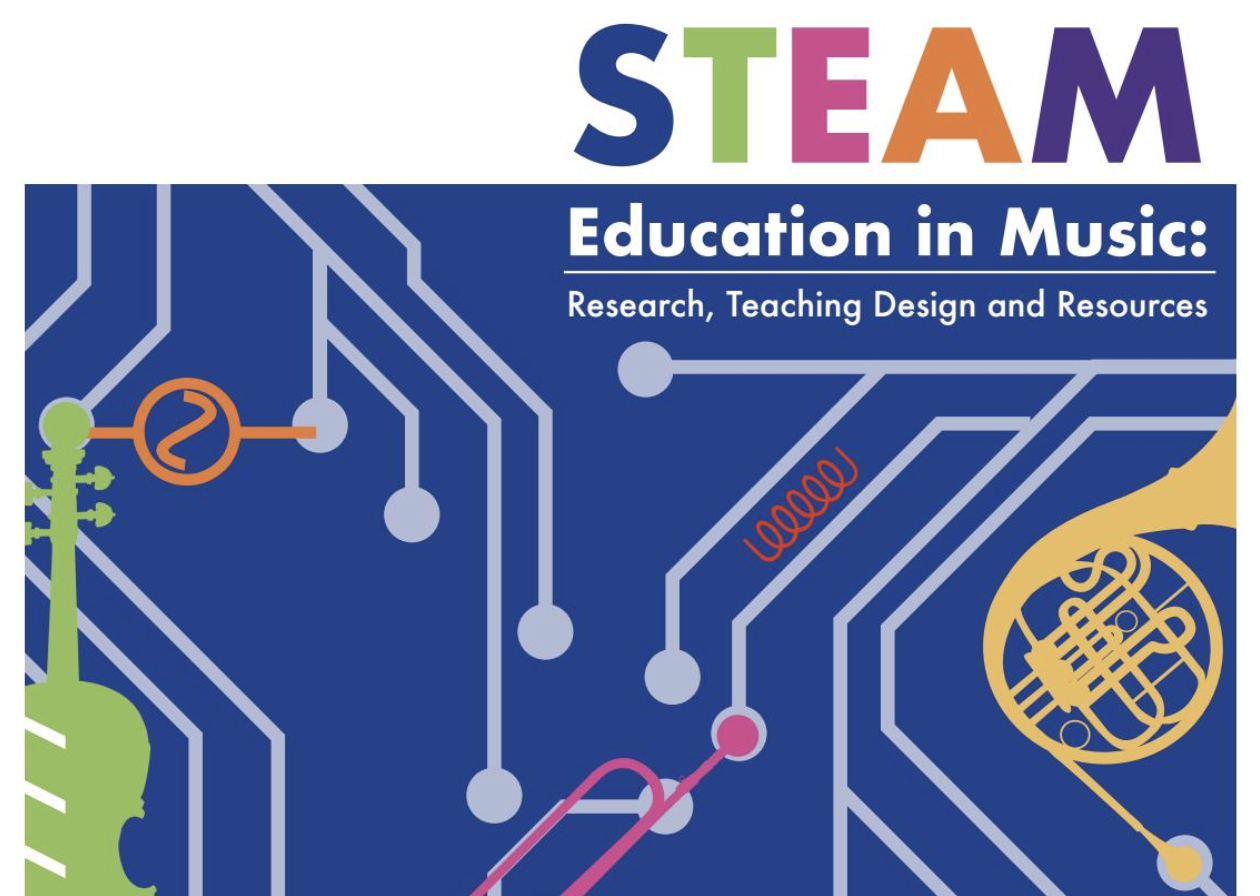
STEAM Education in Music: Research, Teaching Design and Resources (Teaching manual)
The Hong Kong government, local schools and institutions substantially needs to promote STEAM (STEM + Arts) education to nurture students' creativity, collaboration and problemsolving skills through the integration of academic disciplines of Science, Technology, Engineering, Arts and Mathematics. This publication aims to share research findings on the implementation of an innovative STEAM course and to provide teaching manual exemplars and resources for in-service music teachers in conducting STEAM activities in classroom music.
The Hong Kong government, local schools and institutions substantially needs to promote STEAM (STEM + Arts) education to nurture students' creativity, collaboration and problemsolving skills through the integration of academic disciplines of Science, Technology, Engineering, Arts and Mathematics. This publication aims to share research findings on the implementation of an innovative STEAM course and to provide teaching manual exemplars and resources for in-service music teachers in conducting STEAM activities in classroom music.
Read More -
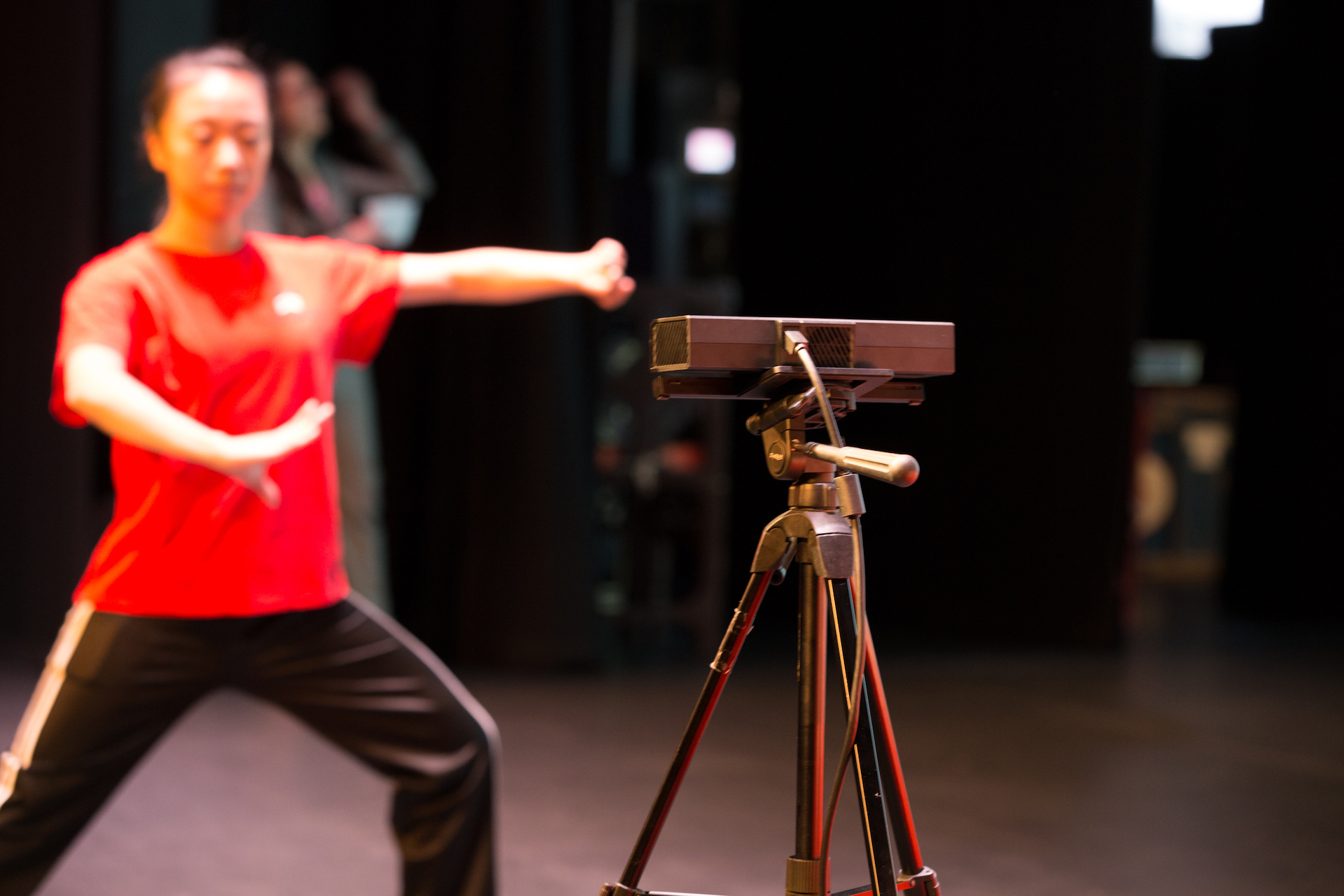
3D Computerized Kinetic Chain Assessment and Learning System for Cantonese Opera Movement (Software)
Innovation may be the key to preserving and promoting traditional art form to wider audience, especially among young people. The 3D Computerized Kinetic Chain Assessment and Learning System (CKCALS) incorporates 3D kinetic sensing technology into Cantonese opera training. It is an example of how innovation can enhance and preserve traditional art forms under threat of losing their relevance amid a lack of instructors. “In the old days, students stayed with their masters all the time, so the teachers could point out the mistakes immediately,” said Leung Bo-wah, who is director of the system and also head of the university’s department of cultural and creative arts. “Now students only have one class per week.”
Innovation may be the key to preserving and promoting traditional art form to wider audience, especially among young people. The 3D Computerized Kinetic Chain Assessment and Learning System (CKCALS) incorporates 3D kinetic sensing technology into Cantonese opera training. It is an example of how innovation can enhance and preserve traditional art forms under threat of losing their relevance amid a lack of instructors. “In the old days, students stayed with their masters all the time, so the teachers could point out the mistakes immediately,” said Leung Bo-wah, who is director of the system and also head of the university’s department of cultural and creative arts. “Now students only have one class per week.”
Read More -
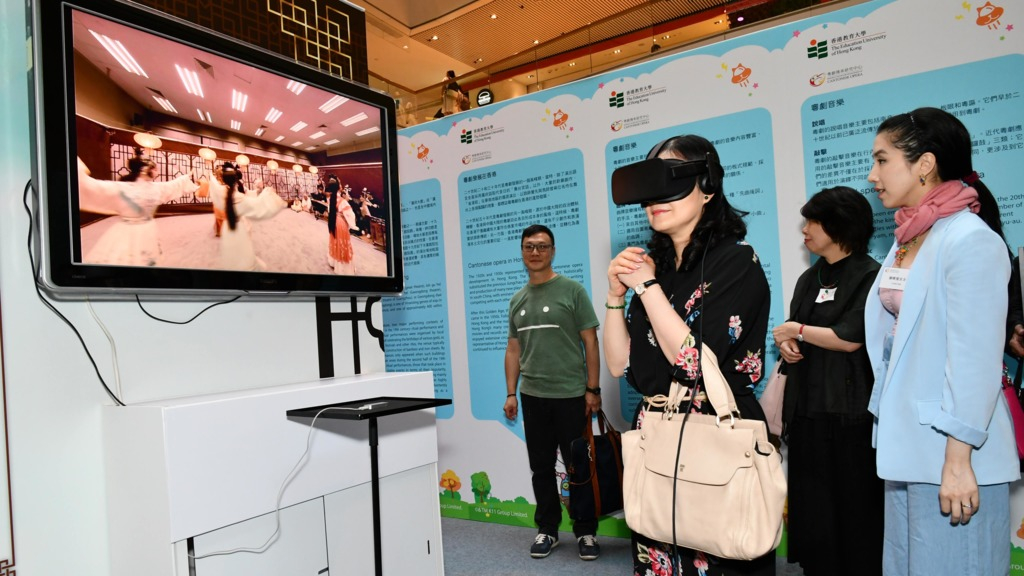
Virtual Reality Experience in Cantonese Opera (Web resources)
Immersive video is a form of virtual reality (VR) that the viewer has control of the viewing direction within a 360-degree environment. A series of high-resolution Cantonese opera immersive videos containing both operatic singing and theatre works were produced, with the viewer’s point from the position of a first-row audience. It creates a new user experience to the audience, allowing them to reposition their visual and aural focus on individual parts or performers without physically present at the position. This allows anyone who never go to the theatre to have the similar experience attending a Cantonese opera performance.
Immersive video is a form of virtual reality (VR) that the viewer has control of the viewing direction within a 360-degree environment. A series of high-resolution Cantonese opera immersive videos containing both operatic singing and theatre works were produced, with the viewer’s point from the position of a first-row audience. It creates a new user experience to the audience, allowing them to reposition their visual and aural focus on individual parts or performers without physically present at the position. This allows anyone who never go to the theatre to have the similar experience attending a Cantonese opera performance.
Read More -
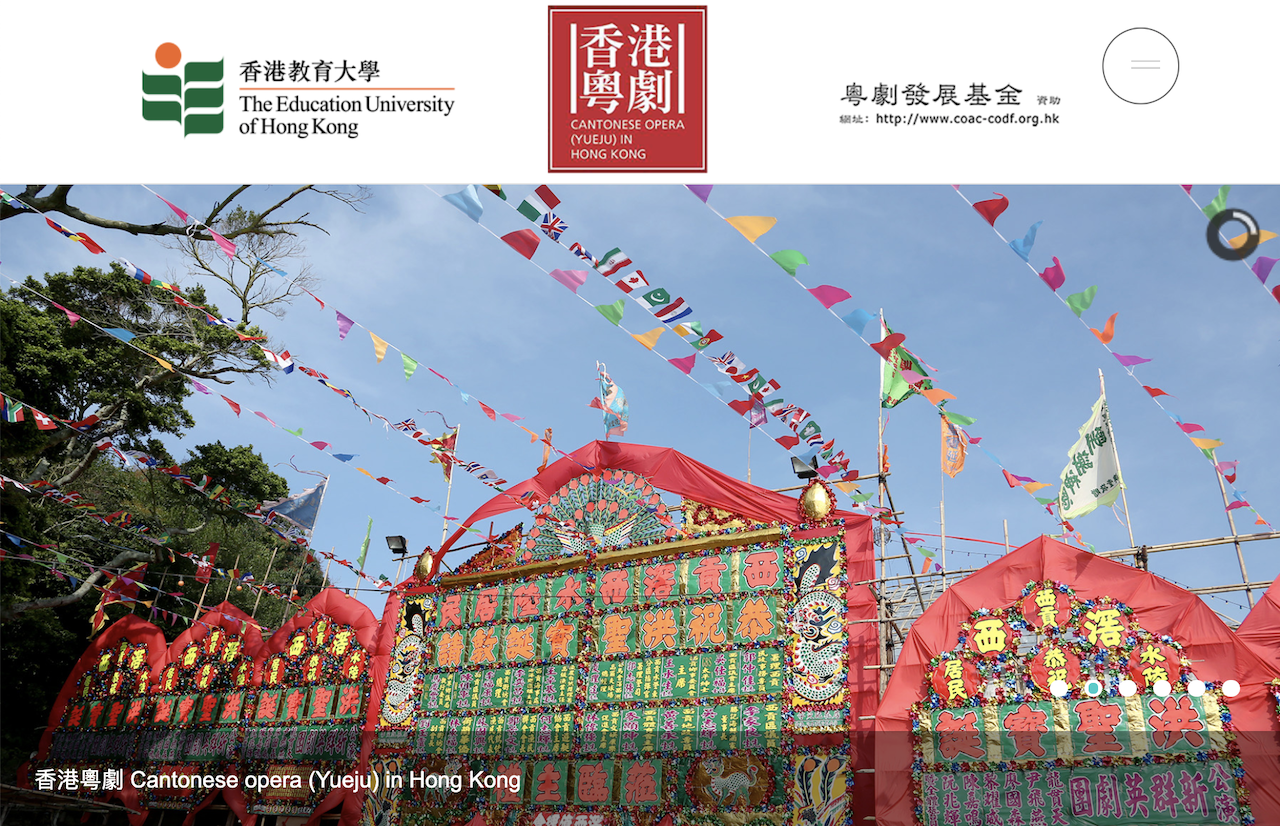
Cantonese Opera (Yueju) in Hong Kong (Web resources)
In addition to being a well-established and representative art form in Hong Kong and south China, Cantonese Opera has also, since 2009, achieved recognition as one of UNESCO’s Intangible Cultural Heritage items. While this undoubtedly reflects its value at a regional level, Cantonese Opera has still to establish itself on the international stage. The Department of Cultural and Creative Arts at The Education University of Hong Kong is committed to promoting this art form through different channels. With the ultimate aim of arousing greater interest, leading in turn to the pursuance of further learning and research, the launch of the Hong Kong Cantonese Opera website will provide international audiences with precise information about Cantonese Opera in both English and Chinese.
In addition to being a well-established and representative art form in Hong Kong and south China, Cantonese Opera has also, since 2009, achieved recognition as one of UNESCO’s Intangible Cultural Heritage items. While this undoubtedly reflects its value at a regional level, Cantonese Opera has still to establish itself on the international stage. The Department of Cultural and Creative Arts at The Education University of Hong Kong is committed to promoting this art form through different channels. With the ultimate aim of arousing greater interest, leading in turn to the pursuance of further learning and research, the launch of the Hong Kong Cantonese Opera website will provide international audiences with precise information about Cantonese Opera in both English and Chinese.
Read More -
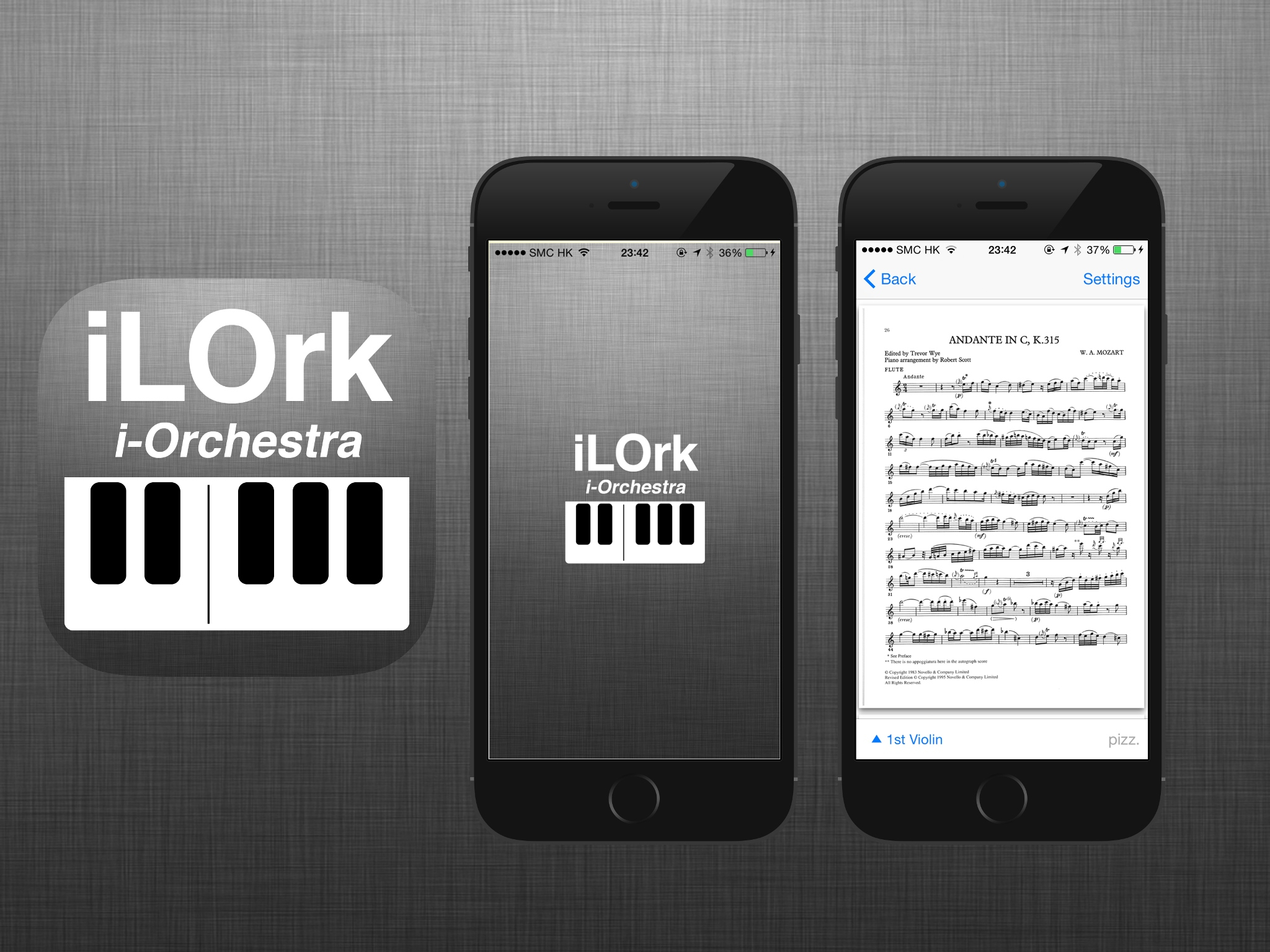
i-Orchestra (iOS app)
i-Orchestra is an iOS app developed by Lee Cheng that enables orchestral simulation in a mobile device ensemble setting. Each ensemble player can simulate an orchestral part via compatible MIDI controller connected to an iPhone / iPad, which collaboratively forms a keyboard orchestra. It enables keyboard players to develop ensemble skills within a virtual environment. Compared to the ordinary setting of keyboard ensemble using digital musical keyboards with built-in synthesizers, i-Orchestra offers benefits including mobility, specific orchestral samplers, smaller size and an opportunity for students to learn manipulating mobile music technology. i-Orchestra could be useful in setting up mobile device ensembles in school setting. Further development of the software would increase the affordance of the app for wider music-making possibilities not limited to MIDI keyboards.
i-Orchestra is an iOS app developed by Lee Cheng that enables orchestral simulation in a mobile device ensemble setting. Each ensemble player can simulate an orchestral part via compatible MIDI controller connected to an iPhone / iPad, which collaboratively forms a keyboard orchestra. It enables keyboard players to develop ensemble skills within a virtual environment. Compared to the ordinary setting of keyboard ensemble using digital musical keyboards with built-in synthesizers, i-Orchestra offers benefits including mobility, specific orchestral samplers, smaller size and an opportunity for students to learn manipulating mobile music technology. i-Orchestra could be useful in setting up mobile device ensembles in school setting. Further development of the software would increase the affordance of the app for wider music-making possibilities not limited to MIDI keyboards.
Read More -
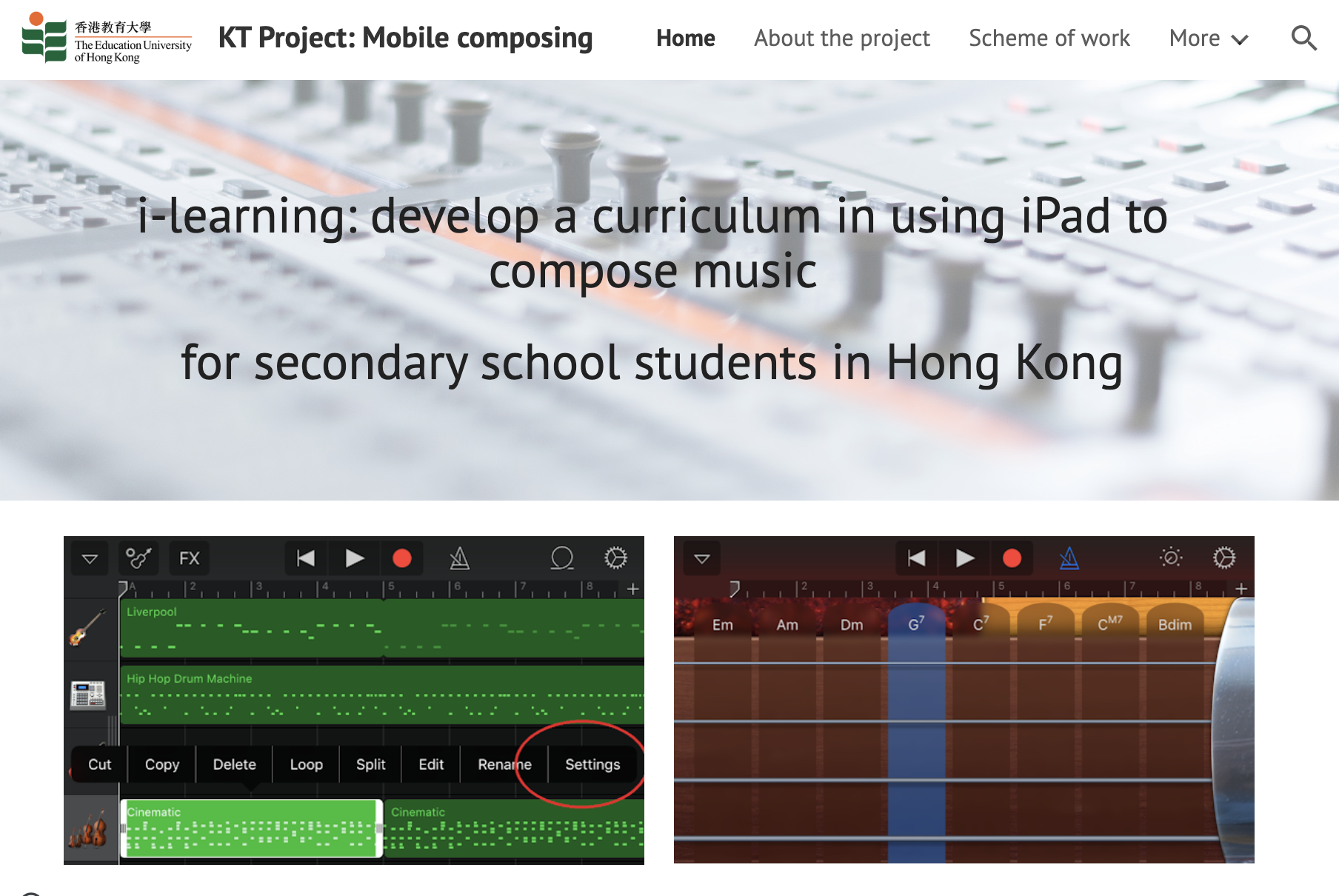
i-learning: Using iPad to compose music for secondary school students in Hong Kong (Web resources)
The objective of this project is to develop a “comprehensive curriculum” using i-pad in music which is suitable for most of the music teachers and students in Hong Kong through an interactive web page to share teaching materials, scheme of works and videos from this project. During the session, students’ works and their learning experiences will be shared. Innovative pedagogy will be discussed in e-learning in music education in classroom teaching.
The objective of this project is to develop a “comprehensive curriculum” using i-pad in music which is suitable for most of the music teachers and students in Hong Kong through an interactive web page to share teaching materials, scheme of works and videos from this project. During the session, students’ works and their learning experiences will be shared. Innovative pedagogy will be discussed in e-learning in music education in classroom teaching.
Read More







